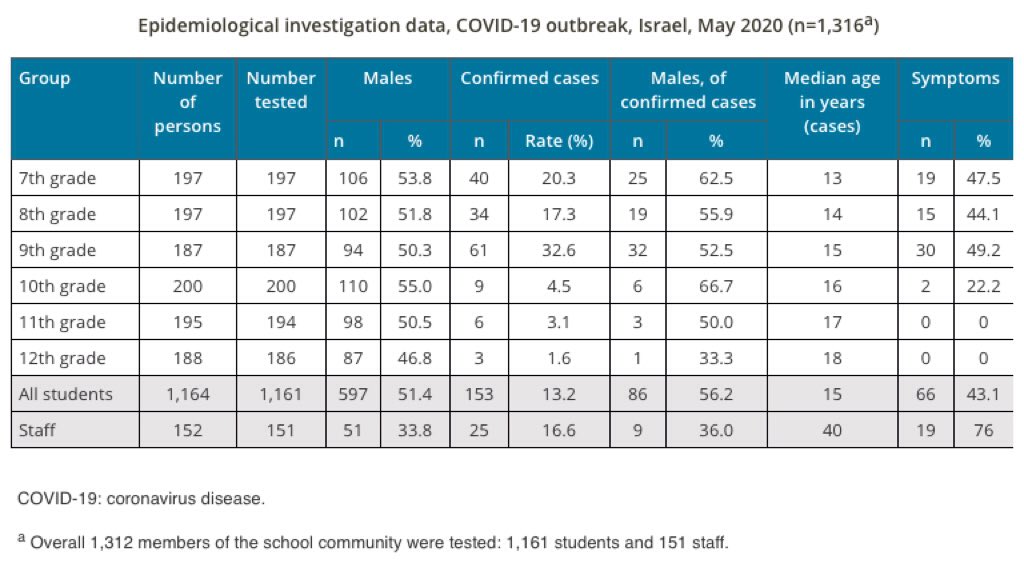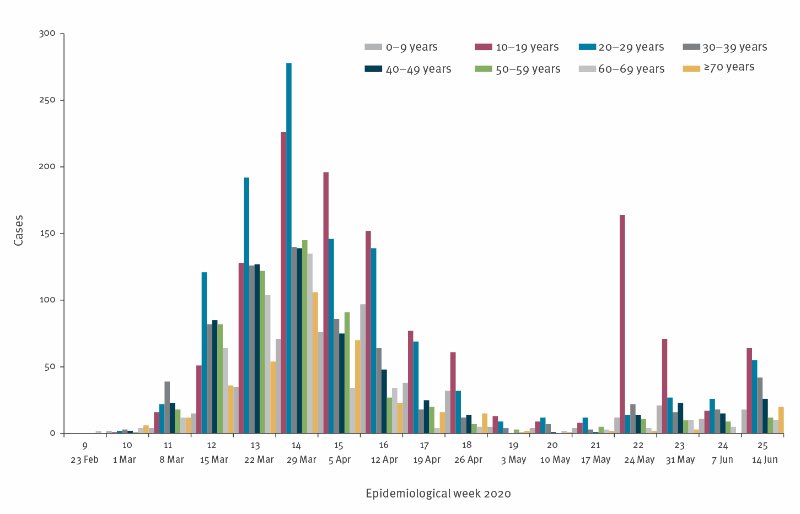(1/6) Study of a #COVID19 cluster associated with a high school in Israel. Over 260 people were infected, of which 153 were students (attack rate: 13.2%) and 25 were staff (AR: 16.6%). Demonstrates potential for mass transmission in the school setting.
https://www.eurosurveillance.org/content/10.2807/1560-7917.ES.2020.25.29.2001352
https://www.eurosurveillance.org/content/10.2807/1560-7917.ES.2020.25.29.2001352
(2/6) The school reopened on 18 May after 2 months closure. Masks were mandated, but between 19-21 May, a heatwave occurred and students were exempted from having to wear masks for these 3 days. Classrooms were crowded, and social distancing was not possible.
(3/6) Two cases were detected on 26 May and 27 May in two children. The cases were not epidemiologically linked. Both students had attended school on the days where face masks were not required to be worn.
(4/6) Over the following days, almost all students and staff were tested, and 153 of 1,161 students (13.2%) and 25 of 151 staff (16.6%) tested positive. A further 87 cases were detected among the contacts of staff and students.
(5/6) Following school reopening, new cases surged in the district.
Prior to reopening, cases in persons aged 10-19 years accounted for 19.8% of #COVID19 cases in Jerusalem. After reopening schools, cases in this age group accounted 40.9% of the total.
Prior to reopening, cases in persons aged 10-19 years accounted for 19.8% of #COVID19 cases in Jerusalem. After reopening schools, cases in this age group accounted 40.9% of the total.
(6/6) The authors made a number of recommendations: small class sizes, minimising student mixing, use of face masks, not attending school if any sign of illness, outdoor classes, and avoiding the three Cs: closed spaces with poor ventilation, crowded places, and close contact.

 Read on Twitter
Read on Twitter




